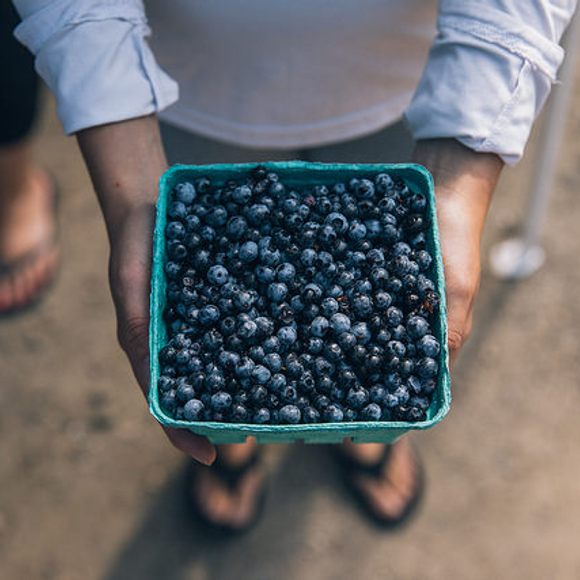Fruits & Vegetables
Maine Wild Blueberries
The sweet, tiny wild berries are only available for two months each year.
In a world of instant gratification and globalized agriculture, the Maine blueberry remains an example of a local, seasonal, and (as many Maine residents would attest) superior crop.
For one thing, they’re grown on the low bush instead of the traditional high bush, a species that’s only found in certain parts of the northeastern United States and Canada. Instead of being planted in the traditional sense, Maine blueberries are spread by rhizomes, an underground network of runners. As rhizomes spread, they produce new roots and, eventually, berry clusters. There’s no need to plant these blueberry bushes, either. Shoots that spring up through the same rhizome systems propagate by themselves. Instead, farmers often clear areas for blueberry bushes to move into.
The berries have more of a purple tinge than other, larger blueberry varieties and thrive amidst frigid winters. Part of the reason why these berries are so tiny—and firmer than plump, supermarket blueberries—is because they aren’t pumped with water. Don’t underestimate this fact: The resulting flavor is sharp. A handful of Maine blueberries go a long way in pies, salads, and just about anything needing an extra kick.
Yet these heavenly berries come with a price: Their diminutive size and delicate skin makes them bruise easily, so shipping them is difficult. Couple that with a mere two month season (late July through early September), and they’re a short-lived delight.
In recent years, Maine blueberries have become more of a presence outside the state, thanks to freezing techniques that allow them to be shipped more easily. Even a few national chains now use them. But if you want to experience the full regional, seasonal smorgasbord of blueberry treats and dishes, you’ll still need to summer in Maine.
Where to Try It
-
Wild Blueberry Land Website
1067 US Hwy 1, Columbia Falls, Maine, 04623, United StatesWild Blueberry Land sells these delectable native fruit fresh during the August-September season and frozen, in syrup and other products the rest of the year.
Written By
 paulamejia
paulamejia
Sources
- extension.umaine.edu/blueberries/
- www.foodrepublic.com/2017/08/09/wild-blueberries-now-in-season/
- www.wildblueberries.com/the-better-blueberry/the-story-of-wild/growing-wild-blueberries/
- extension.umaine.edu/blueberries/factsheets/production/filling-bare-spots-in-blueberry-fields/
- www.eater.com/2016/7/6/12094288/wild-maine-blueberries
- www.wildblueberries.com/blog/fresh-maine-blueberries-a-summer-tradition/















